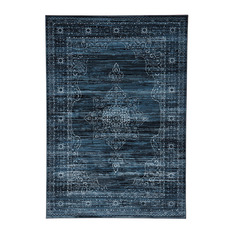Product Category
Style
Country
- All
- Australia
4,398 Rugs
Rugs allow you to decorate without commitment – they can add colour, texture, pattern and personality to your home, provide comfort underfoot and can even help define a space. They’re the glue that brings all of your furnishings together, and can make any room significantly more inviting. There is an enormous variety of rugs online, in infinite shapes, sizes, colours and materials that choosing the right one can be feel like a navigating a minefield. To help make your search easier, consider the following tips before you buy: More

Save

Save
Sponsored Products

Visit Store
EORC T141GY Hand Woven Wool and Viscose Marakesh Trellis Rug, 10'x14', Silver
USD 1,689.00 | EORC Eastern Rugs

Visit Store
Safavieh Soho SOH580A Ivory, Navy 6' Square Rug
USD 302.40 | PlushRugs

Visit Store
Safavieh CY1551-3201 Courtyard Indoor / Outdoor Natural and Terracotta
USD 98.60 | Build.com

Visit Store
Surya NOD100 Nomad Hand Woven 100% Wool Rug
USD 56.35 | Build.com

Visit Store
Safavieh Soho SOH580A Ivory, Navy 6' Round Rug
USD 302.40 | PlushRugs

Visit Store
Surya Yacht Club YTC-2018 Blue 8' x 11' Rug
USD 792.00 | PlushRugs
What style of rug should I look for?
A rug should, first and foremost, reflect the overall style of your home. For those with traditional tastes, Persian and floral patterns are go-to options, while chevron, geometric patterns, stripes and bright colours are more contemporary options. If you prefer to mix and match, various throw rugs can add colour and texture – just avoid rugs with conflicting patterns and colours. For a monochromatic scheme, opt for natural rugs such as seagrass, sisal or jute – these also great for high-traffic areas because they’re durable and good at concealing dirt and wear and tear.
How do I choose the right size?
While most rugs are available in standard sizes, many designers will encourage you to step outside the norm and look to your furniture to determine the size you need. First, decide what you want your rug to do. If it’s to define a zone within an open-plan space – let’s say the living room – ensure your area rug is large enough to rest under two legs of the sofa and any additional chairs. Marking out the dimensions of the space according to central furniture pieces such as the couch, coffee table or dining set is a good way to get started. An area rug that is too small won’t anchor the room and could make your room feel tinier than what it is. On the flip side, a rug that is too large will dwarf everything else in the room.
If, instead, you only want to add visual interest to the space or complement your decor, the likes of a sheepskin rug or small round rug could be an option. Square or rectangular rugs tend to be the easiest shape to work with, whereas round rugs are typically used to soften sharp edges, and look particularly good under round furniture.
What material should my rug be made of?
The functionality of the space and the kind of foot traffic it will receive will determine the type of material you should choose. Cotton, synthetic and wool rugs work well in bedrooms and living rooms because they add cushion underfoot and are available in various styles and colours to suit your decor. Wool is super soft, durable and has great insulating properties, while cotton and synthetics are cheaper and easier to clean, but don’t feel as luxurious. Jute rugs and sisal rugs are highly durable and aren’t prone to fading, so they’re great for high-traffic areas such as hallways and rooms that get a lot of sun. Silk is luxurious and boasts fine detailing, but requires professional cleaning and is better suited to low-traffic areas such as the bedroom. It’s also best avoided if you have young children or pets.



































